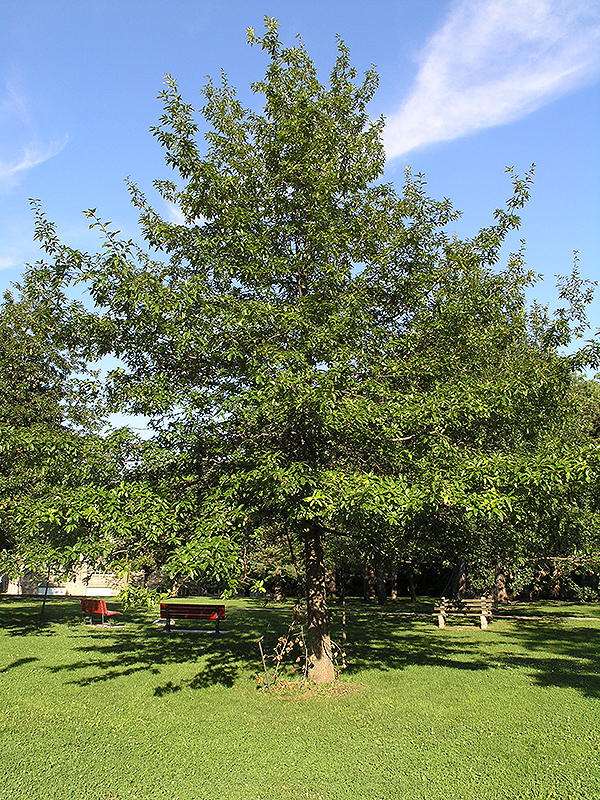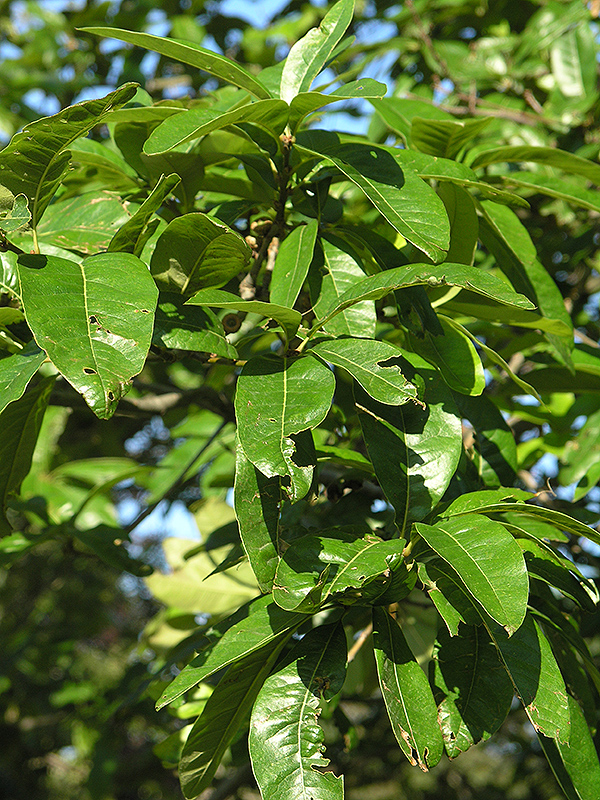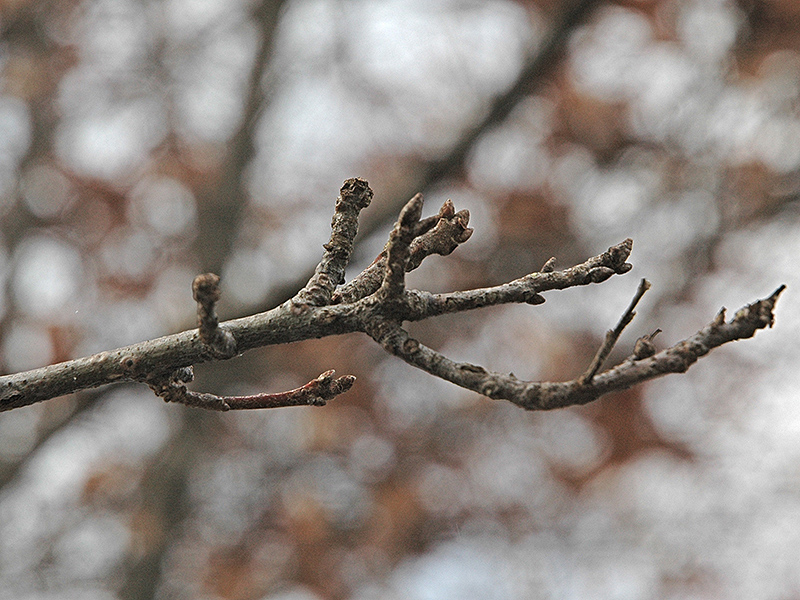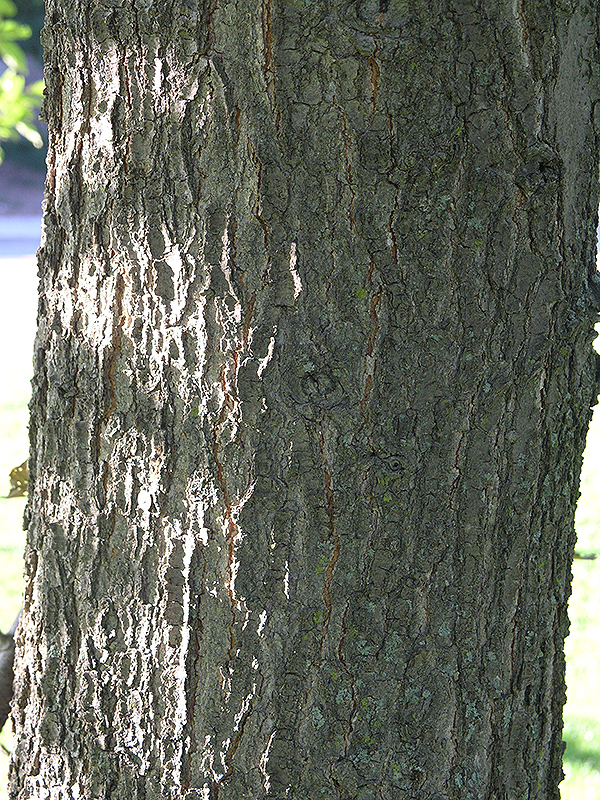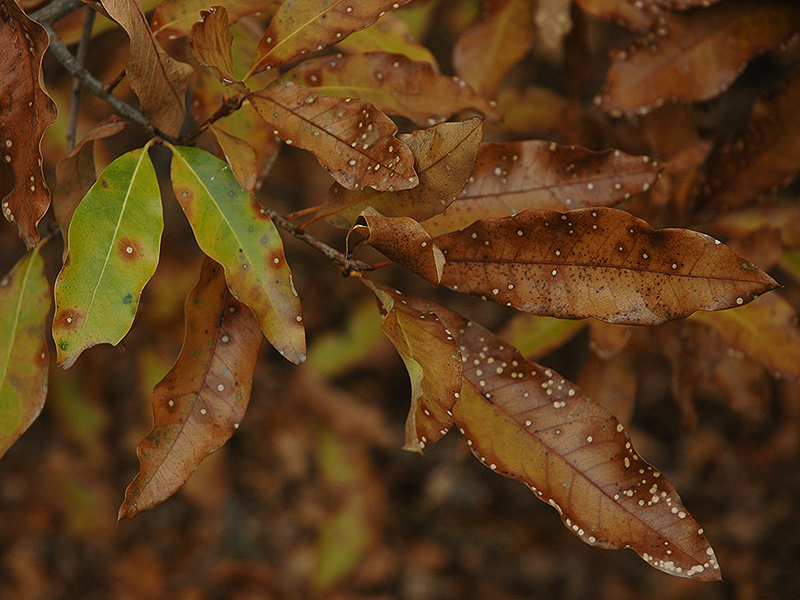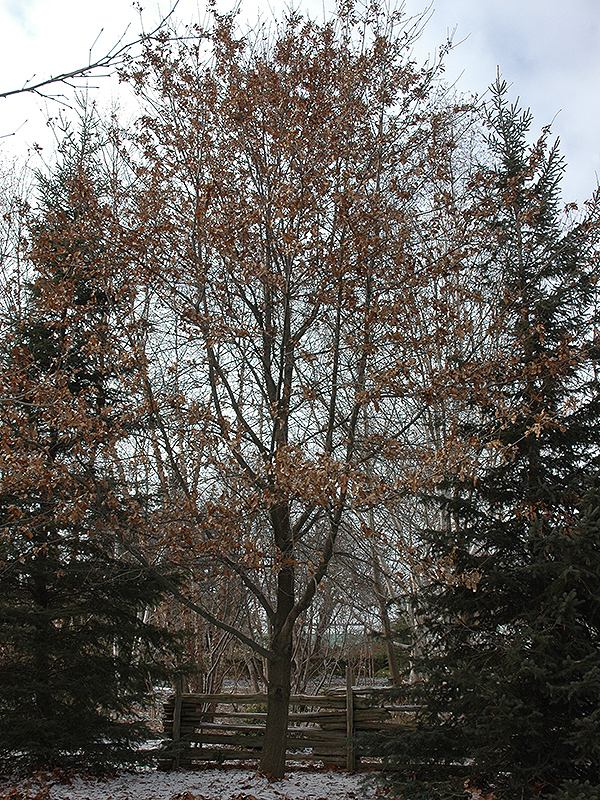| General Description | A broadly pyramidal oak with uncharacteristic oak leaves that grows quite rapidly for its genus. |
| ID Characteristic | Lanceolate shiny leaves that often persist into the winter months. |
| Shape | Broadly pyramidal becoming rounded. |
| Landscape | A specimen or park tree that needs to be given room to realize its full stature. |
| Propagation | Commonly through seed, although the seed is recalcitrant (will not store). |
| Notable Specimens | The Niagara Parks Botanical Gardens, Niagara Falls, Ontario, Canada. The University of Western Ontario, London, Ontario, Canada. |
| Habitat | Found at altitudes of 100-700 m. |
| Bark/Stem Description | Smooth, blackish when young, maturing to a purple-grey and deeply furrowed. |
| Flower/Leaf Bud Description | Brown, 3 mm in length. |
| Leaf Description | Oblong, a pointed apex and a attenuate base, dark green with a pale pubescent underside, 7.5-15 x 2-5 cm. |
| Fruit Description | Acorn, round with black stripes, 1-2 cm. |
| Colour Description | Winter colour is substantial due to the retained dried leaves. |
| Texture Description | Coarse textured. |
